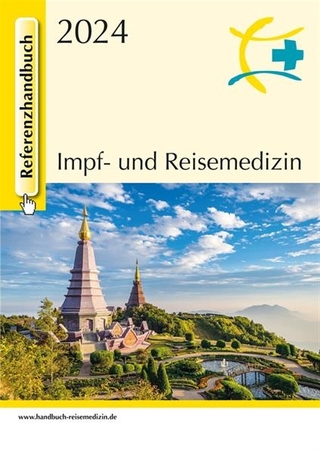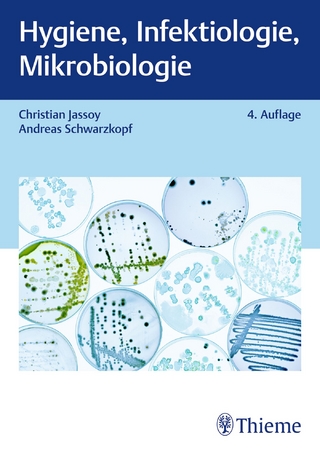
Trichinella and Trichinosis
Kluwer Academic/Plenum Publishers (Verlag)
978-0-306-41140-3 (ISBN)
- Titel ist leider vergriffen;
keine Neuauflage - Artikel merken
For the physician, it offers a patient with painful and sometimes fatal disease; for the public-health official, a threat to the commonweal; for the experimental biologist, a life cycle that is unique yet easily and rapidly maintained in the laboratory; for the field ecologist, a symbiont with an affinity for an extraordinary range of wildlife species; for the pork producer, a poorer profit; for the cook, a culinary constraint; and for the diner, a dietary danger. Yet, despite this breadth of interest, and the cascade of new data, the only comprehensive books on the subject in English are those of S.E.
1 Historical Introduction.- 1. Prologue: Ghosts of Christmas Past and Christmas Present.- 2. A Worm Discovered (1835).- 3. A Nematode Life Cycle Discovered (1835-1860).- 4. From Zoological Curiosity to Lethal Pathogen (1860-1900).- 5. Consequences (Politics and Parasites).- 6. The Recent Past.- References.- 2 Species, and Infraspecific Variation.- 1. Historical Perspective.- 2. A Working Definition of Species.- 3. Terminology.- 4. Distribution of Isolates.- 5. Criteria for Species and Isolates.- 5.1. Genetic Criteria.- 5.2. Morphological Criteria.- 5.3. Biochemical and Immunological Criteria.- 5.4. Sensitivity to Drug Treatment.- 5.5. Effect of Host on Reproductive-Capacity Index.- 5.6. Other Biological Characteristics.- 6. Trichinella spiralis var. pseudospiralis-an Enigma.- 7. Speciation in Trichinella.- 8. Future Considerations.- References.- 3 Biology.- 1. Introduction.- 2. Ingestion of the Infective First-Stage Larva.- 3. Digestion of Host Tissues away from the Infective First-Stage Larva.- 4. Intramulticellular Enterai Niche.- 4.1. Entrance of the Infective First-Stage Larva.- 4.2. Molting and Development.- 4.3. Mating.- 4.4. Fecundity.- 5. Intracellular Parenteral Niche.- 5.1. Migration of the First-Stage Larva to the Niche.- 5.2. Entrance of the Migratory First-Stage Larva.- 5.3. Growth and Development.- 5.4. Mature Nurse Cell-Infective First-Stage Larva Complex.- References.- 4 Biochemistry.- 1. Introduction.- 2. Carbohydrates and Carbohydrate Metabolism.- 2.1. Adult Worms.- 2.2. Muscle Larvae.- 3. Respiration.- 3.1. Adult Worms.- 3.2. Muscle Larvae.- 4. Lipids and Lipid Metabolism.- 4.1. Adult Worms.- 4.2. Muscle Larvae.- 5. Nucleic Acids and Nucleic Acid Metabolism: Muscle Larvae.- 6. Proteins and Protein Metabolism: Muscle Larvae and Adult Worms.- 7. Nutrition.- 7.1. Adult Worms.- 7.2. Muscle Larvae.- References.- 5 Anatomical Pathology.- 1. Introduction.- 2. Gastrointestinal Tract.- 2.1. Gross Changes.- 2.2. Microscopic Changes.- 3. Striated Muscle.- 3.1. Gross Changes.- 3.2. Microscopic Changes.- 3.3. Encapsulation.- 3.4. Calcification.- 4. Other Organs Involved.- 4.1. Heart.- 4.2. Liver.- 4.3. Spleen.- 4.4. Kidneys.- 4.5. Eyes.- 4.6. Lungs.- 4.7. Central Nervous System.- 4.8. Bone Marrow.- 4.9. Other Locations.- References.- 6 Pathophysiology of the Gastrointestinal Phase.- 1. Format of This Review.- 2. Gastrointestinal Symptoms.- 3. Morphological Changes.- 3.1. Macroscopic.- 3.2. Histological.- 4. Physiological Changes.- 4.1. Epithelium-Related.- 4.2. Smooth-Muscle-Related.- 5. Bases for Functional Changes.- 5.1. Direct Action of Parasite.- 5.2. Influence of Lamina Propria.- 5.3. Endocrine Disturbances.- 6. Host-Parasite Interrelationships.- 7. Relationships between Pathophysiology and Symptoms.- 8. Summary.- References.- 7 Pathophysiology of the Muscle Phase.- 1. Introduction.- 2. Parasite-Induced Modifications in Host Striated Skeletal Muscle.- 2.1. Alterations Induced in the Host Myofiber during Contact and Entry by the Newborn First-Stage Larva.- 2.2. Alterations in Host Muscle during Growth and Development of the Muscle Larva.- 2.3. Mature Nurse Cell.- 2.4. Hypothesis: A Possible Mechanism by Which the Parasite Initiates Redifferentiation in the Host Myofiber.- 2.5. Benefits Derived by the Muscle Larva from Pathophysiological Alterations in Host Muscle.- 3. Cardiopathophysiology in Trichinosis.- References.- 8 The Immune Response.- 1. Introduction.- 2. Immunity and the Intestinal Phase.- 2.1. Immunity against Adult Worms in Primary Infections.- 2.2. Immunity against Adult Worms in Reinfections.- 2.3. Immunity against Preadult Stages-Rapid Expulsion.- 3. Immunity and Newborn Larvae.- 3.1. Active Immunity in Mice and Rats.- 3.2. Passive Immunity in Mice.- 3.3. Effects of Cells and Serum Components in Vitro.- 4. Genetic Influences on Immunity to Trichinella.- 5. Stage Specificity of the Immune Response.- 5.1. "Dual-Antibody" Hypothesis of Oliver-Gonzalez.- 5.2. Immunological Evidence.- 5.3. Parasitological Evidence.- 5.4. A Revision of the Dual-Antibody Hypothesis.- References.- 9 Antigens.- 1. Introduction.- 2. Source of Antigens.- 2.1. Cuticular Antigens.- 2.2. Excretory-Secretory Antigens.- 2.3. Somatic Antigens.- 3. Enumeration, Isolation, and Characterization of Antigens.- 4. Concluding Remarks.- References.- 10 Chemotherapy.- 1. Introduction.- 2. Experimental Chemotherapy.- 2.1. Methods.- 2.2. Drug Efficacy.- 3. Clinical Chemotherapy.- 3.1. Clinical Prophylaxis.- 3.2. Clinical Therapy (Treatment of Patent Infections).- References.- 11 Clinical Aspects in Man.- 1. Introduction.- 2. Infection and Disease.- 2.1. Proportion of Symptomatic and Asymptomatic Cases in Trichinosis.- 2.2. Course of Trichinosis.- 2.3. Severity of Trichinosis.- 2.4. Factors That Influence the Severity of Trichinosis.- 3. Symptoms, Signs, and Clinical Pathology.- 3.1. Abdominal Syndrome.- 3.2. General Trichinosis Syndrome.- 3.3. Signs of Allergic Vasculitis.- 3.4. Symptoms and Signs Associated with Muscle Tissue.- 3.5. Signs of Metabolic Disorders.- 3.6. Complications of Trichinosis.- 3.7. Pathology in Laboratory Tests.- 4. Diagnosis.- 4.1. Clinical History-Taking.- 4.2. Physical Examination.- 4.3. Paraclinical Tests.- 4.4. Finding the Parasite.- 4.5. Differential Diagnosis of Trichinosis.- 5. Management and Treatment.- 5.1. Treatment of the Intestinal Infection.- 5.2. Acute Severe Trichinosis.- 5.3. Moderate or Mild Trichinosis.- 5.4. Late and Convalescent Phases of Trichinosis.- 5.5. Trichinosis in Children, Pregnant and Lactating Women, and Immunosuppressed Patients.- References.- 12 Immunodiagnosis in Man.- 1. Introduction.- 2. Immunodiagnostic Methods.- 2.1. Parasite Antigens.- 2.2. Indirect Immunofluorescence.- 2.3. Passive Hemagglutination.- 2.4. Enzyme-Linked Immunosorbent Assay.- 2.5. Counterimmunoelectrophoresis.- 2.6. Other Serological Methods.- 2.7. Skin Tests.- 3. Evaluation and Recommendation.- 4. Conclusions.- 5. Protocols for Indirect Immunofluorescence and Enzyme-Linked Immunosorbent Assay.- 5.1. Indirect Immunofluorescence.- 5.2. Enzyme-Linked Immunosorbent Assay.- References.- 13 Epidemiology I: Modes of Transmission.- 1. Introduction.- 2. Sylvatic Cycle.- 3. Domestic Cycle.- 4. Special Epidemiological Circumstances.- 5. Susceptible Host Species.- References.- 14 Epidemiology II: Geographic Distribution and Prevalence.- 1. Introduction.- 2. North America.- 2.1. Canada and Alaska.- 2.2. Greenland.- 2.3. United States.- 2.4. Latin America.- 3. Europe.- 3.1. British Isles.- 3.2. Germany.- 3.3. Austria.- 3.4. Switzerland.- 3.5. The Netherlands.- 3.6. Belgium.- 3.7. France.- 3.8. Spain.- 3.9. Portugal.- 3.10. Italy.- 3.11. Greece.- 4. Scandinavia.- 4.1. Norway.- 4.2. Sweden.- 4.3. Denmark.- 4.4. Finland.- 5. Eastern Europe.- 5.1. Poland.- 5.2. Czechoslovakia.- 5.3. Hungary.- 5.4. Romania.- 5.5. Yugoslavia.- 5.6. Bulgaria.- 6. Union of Soviet Socialist Republics.- 7. Asia.- 7.1. Middle East.- 7.2. Southeast Asia.- 7.3. Far East.- 8. Africa.- 9. Australia, New Zealand, and Pacific Islands.- References.- 15 Control I: Public-Health Aspects (with Special Reference to the United States).- 1. Introduction.- 2. Mechanisms of Control.- 2.1. Prevention of Swine Infections.- 2.2. Detection of Infected Swine.- 2.3. Rendering Infected Pork Noninfective.- 2.4. Game Foods.- 3. Measures Adopted in the United States.- 3.1. Control of Garbage.- 3.2. Regulation of Commercial Pork Products.- 3.3. Game Foods.- 3.4. Education.- 3.5. The Future.- References.- 16 Control II: Surveillance in Swine and other Animals by Muscle Examination.- 1. Introduction.- 1.1. General Methods and Uses.- 1.2. Criteria for Use.- 2. Trichinoscopic Method.- 2.1. Use.- 2.2. Procedure for Swine Diagnosis.- 2.3. Drawbacks.- 2.4. Other Uses.- 3. Basic Digestion Method.- 3.1. Basic Procedure.- 3.2. Modifications.- 3.3. Advantages and Disadvantages.- 4. Pooled Digestion Methods.- 4.1. Pooled-Sample Method: Procedure.- 4.2. Stomacher Method: Procedure.- 4.3. Other Modifications.- 5. Other Direct Diagnostic Methods.- 5.1. Mechanical Disintegration Method.- 5.2. Microscopic Section (Biopsy Method).- 5.3. Xenodiagnosis.- 6. Summary.- References.- 17 Control III: Surveillance in Swine by Immunodiagnostic Methods.- 1. Introduction.- 2. Serological Methods.- 2.1. Complement-Fixation Test.- 2.2. Particle-Agglutination Methods.- 2.3. Indirect Immunofluorescence Test.- 2.4. Enzyme Immunoassays.- 2.5. Radioimmunoassay.- 3. Sensitivity and Specificity.- 4. Antigen Preparation and Purification.- 5. Evaluation of Serological Methods in Various Geographic Areas.- 5.1. Evaluation of the Enzyme-Linked Immunosorbent Assay in the United States.- 5.2. Evaluation of the Enzyme-Linked Immunosorbent Assay in European Countries.- 6. Mechanization.- 6.1. Mechanized System for the Macro-Enzyme-Linked Immunosorbent Assay.- 6.2. Mechanized System for the Micro-Enzyme-Linked Immunosorbent Assay.- 7. Surveillance by Serological Methods.- 7.1. Inspection at the Slaughterhouse.- 7.2. Inspection at the Farm.- 7.3. Individual vs. Population Control.- 7.4. Legislation.- 8. Concluding Remarks.- References.- Appendix 1 Synopsis of Morphology.- 1. Introduction.- 2. Morphology of the Adult Male.- 3. Morphology of the Adult Female.- 4. Morphology of the Infective First-Stage Larva.- References.- Appendix 2 Laboratory Techniques.- Methods.- References.
| Zusatzinfo | biography |
|---|---|
| Sprache | englisch |
| Themenwelt | Medizin / Pharmazie ► Medizinische Fachgebiete ► Mikrobiologie / Infektologie / Reisemedizin |
| ISBN-10 | 0-306-41140-7 / 0306411407 |
| ISBN-13 | 978-0-306-41140-3 / 9780306411403 |
| Zustand | Neuware |
| Haben Sie eine Frage zum Produkt? |
aus dem Bereich


